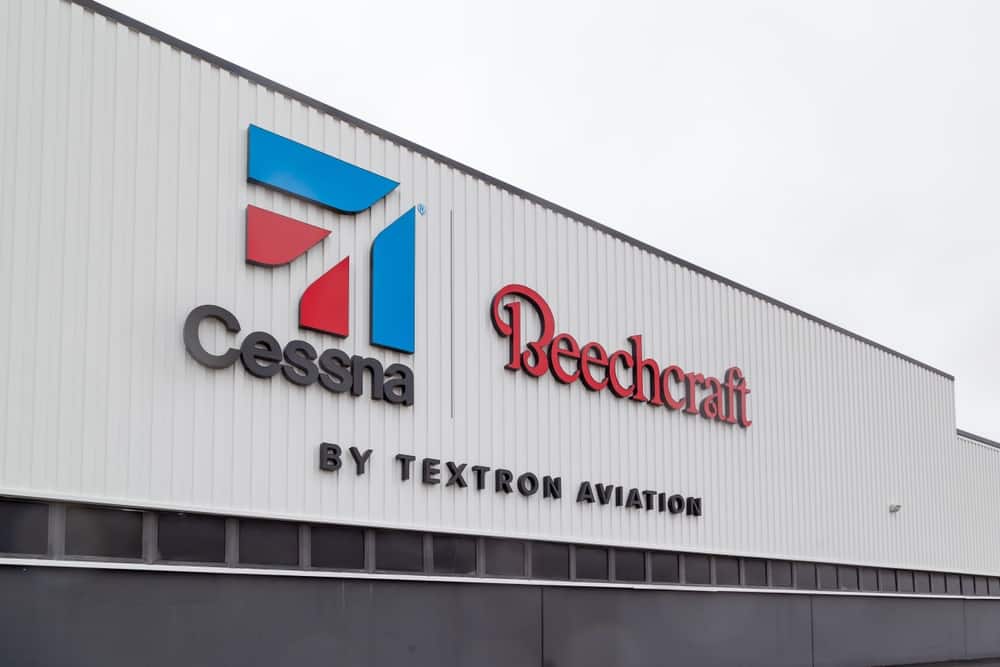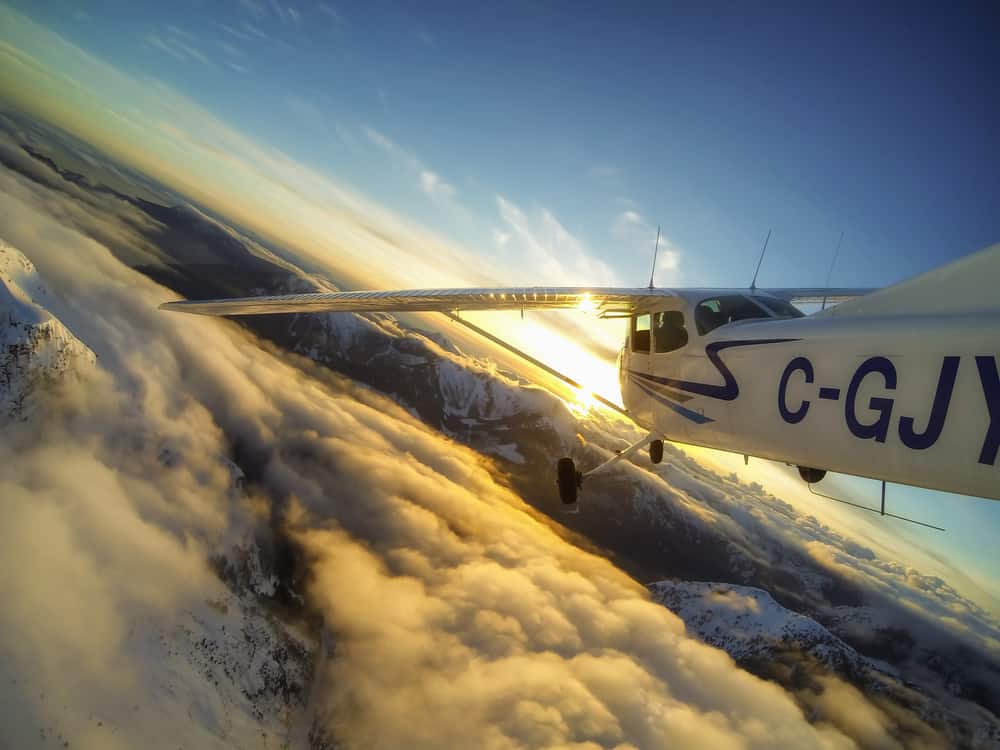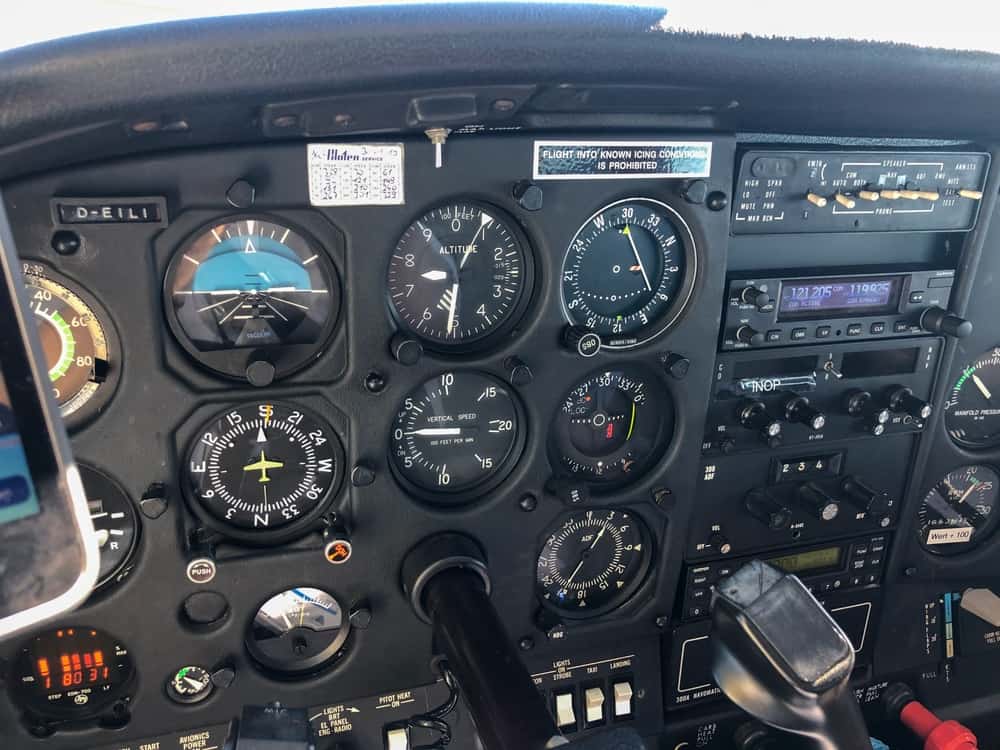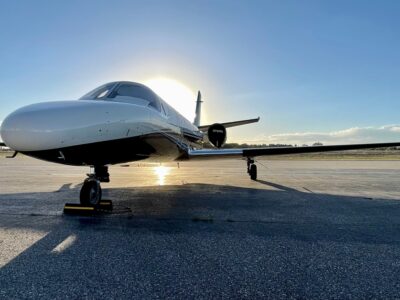Cessna is the world’s leading manufacturer of private jets. It’s most notable for its high-wing small airplanes, as the company places the wings above the aircraft’s body, which separates them from other aircraft manufacturers.
Cessna produces a variety of products that offer solutions for aviators of all skill levels, from beginners to the most experienced:
- Piston aircraft
- Versatile turboprops with noteworthy payloads
- Air ambulances
- Citation business jets
Under Textron Aviation, Cessna offers the following services:
- Upgrades and equipment installs
- Maintenance
- Components and repairs
- Refurbishing
Topics
About the Company

Over eight decades ago, in Wichita, Kansas, a boutique aviation firm was founded to do something that many people believed was impossible: to construct a monoplane with a wing that did not utilize any supporting struts or braces. Clyde Cessna irrevocably altered the fate of the aviation industry in 1927, when the first Cessna All Purpose airplane was manufactured. Clyde Cessna’s high-wing design has been the benchmark since its introduction.
Cessna and Victor H. Roos partnered up in 1927, which ultimately resulted in the establishment of the Cessna-Roos Aircraft Company. But not long after that, Roos handed in his resignation, and in December of the same year, the secretary of state gave the go-ahead for the company to alter its name to Cessna Aircraft Corporation.
Before Cessna began working with his son Eldon on the CR-series racing aircraft, several planes were in production, including:
- The AW,
- the CW-6,
- and the DC-6.
Even though there was a drop in aircraft sales during the Great Depression, the CR series proved to be the primary factor that allowed the firm to persevere and survive.
Cessna was forced out of business years after the Great Depression. Still, the business was eventually reinstated thanks to the hard work of Clyde Cessna’s nephews, who would later take over the company, as Clyde Cessna decided to return to a life of farming he had before entering the aviation business.
Throughout a significant portion of the middle and latter half of the 20th century, the Cessna brand was one of the world’s most prolific and varied manufacturers of general aviation aircraft.
Clyde Cessna passed away on November 20, 1954, at 74. Although he was posthumously inducted into the National Aviation Hall of Fame and the International Air & Space Hall of Fame, he made an impact and a name for himself that will enter aviation history and live long after he passed away.
This is how things developed from the 80s onwards.
- In 1983, Cessna sold its ARC Avionics subsidiary to the Sperry Corporation.
- In 1985, Cessna was acquired by General Dynamics, a major defense contractor.
- In 1988, Cessna sold its fluid power branch to the Eaton Corporation.
- The following year, the Paris-based Compagnie Francaise Chaufour Investissement acquired the company’s 40 percent stake in Reims Aviation, which had been building the Caravan. However, Cessna resumed the manufacture of the successful Caravan.
- Although a subsidiary of General Dynamics, Cessna was permitted to preserve management independence. Self-insured against litigation, it was now also self-funded and earning a profit for its parent firm.
- In 1992, General Dynamics sold Cessna to Textron, the parent company of Bell Helicopter, with Cessna’s independence intact and Meyer continuing as chairman.
- Following Textron’s acquisition of the firm, Cessna extended its Citation business jet lineup: Citation VII and CitationJet versions, the Citation Ultra model, and the Citation V.
- In 1993, Cessna sold the McCauley Accessory Division.
- Cessna continued to prosper in 1996, earning significant orders for Citation Ultras from the United States Army.
- In 1998, the company’s good fortune continued as the Citation Excel went into production.
As it prepared to enter the 21st century, Cessna remained the leading U.S. private aircraft producer. Cessna continued to offer the industry’s most comprehensive selection of products, with its cargo aircraft and modern private jets, including the new Citation X.
Ronald Draper is the current CEO of Textron Aviation, Inc, which runs Beechcraft, Cessna and Hawker.
Products and Services

Let’s review Cessna’s aircraft models and the services the company offers.
Aircraft Types
Cessna Citation business jets:
- Citation Longitude
Passengers: 4 to 12
Flight range: 3,500 nm
- Citation Latitude
Passengers: 9
Flight range: 2,700 nm
- Citation XLS Gen2
Passengers: 12
Flight range: 2,100 nm
- Citation CJ4 Gen2
Passengers: 10
Flight range: 2,165 nm
Passengers: 10
- Citation CJ3+
Passengers: 9
Flight range: 2,040 nm
- Citation M2 Gen2
Passengers: 7
Flight range: 1,550 nm
Cessna turboprops:
- Grand Caravan EX
Passengers 10 to 14
Flight range: 912 nm
- Cessna Caravan
Passengers: 10 to 14
Flight range: 1,070 nm
- Cessna Skycourier (cargo)
Flight range: 940 nm
Payload: 6,000 lb
- Cessna Skycourier (passenger)
Flight range: 920 nm
Passengers: 19
Cessna piston propellers:
- Cessna Turbo Stationar HD
Flight range: 703 nm
Passengers: 6
- Cessna Turbo Skylane
Flight range: 971 nm
Passengers: 4
- Cessna Skylane
Flight range: 915 nm
Passengers: 4
- Cessna Skyhawk
Flight range: 640 nm
Passengers: 4
Most Famous Aircraft by the Company
Model: Cessna Skyhawk
The Skyhawk piston is the most popular single-engine aircraft that has ever been constructed, also known for having the reputation of being the best aircraft for training purposes. This piston propeller has excellent vision, an advanced glass cockpit, and low landing speed, making it a popular choice for flight training and best suited for novice pilots.
Model: Cessna Skylane
Cessna Skylane aircraft has 230 horsepower, a high-wing design, and sturdy construction, providing a degree of performance ideal for the pilot moving up to the next level after training.
HD version of the Cessna Turbo Stationair
The turbocharged Cessna Turbo Stationar HD piston propeller can transport five passengers, carry gear, and land on a short unpaved airstrip or at a lake.
Model: Cessna Caravan
The Cessna Caravan is famous for its durability and adaptability, excellent performance, low operating costs, and the capacity to adapt to various tasks, thanks to its robust turboprop engine. Moreover, this aircraft provides outstanding cargo capabilities.
Model: Cessna’s Grand Caravan EX
This aircraft is known for its dependable and efficient performance and is widely used by regional airlines, charter operators, and cargo carriers worldwide. When designing the Grand Caravan EX turboprop, the engineers optimized it for challenging missions, high payloads, and short, rough runways. With its single engine, this turboprop is economical and straightforward to operate.
Model: Cessna SkyCourier
Cessna SkyCourier can reliably carry heavy payloads thanks to its performance and capability. This aircraft has two configurations that suit multiple needs: a 19-passenger configuration or a freight configuration capable of carrying shipping containers.
Model: Cessna Citation M2 Gen2
This jet is the pinnacle of elegance and functionality in one convenient package.
- First-rate capabilities, known for its comfort.
- Ideal for use as a corporate transport.
- Excellent for individual travel and families.
The cabin, which has a construction that’s among the best in its class, can conveniently seat as many as seven fliers.
Model: Cessna Citation CJ3+
This model has exceptional performance while flying on longer flights and needs fewer maintenance intervals. The standard feature can accommodate nine passengers and has a little more than 16 cubic feet baggage space, a lav seat in the lavatory, and options for internet onboard.
Model: Cessna Citation CJ4 Gen2
Citation CJ4 Gen2 is Cessna’s one-pilot modern jet, designed and crafted with amenities like seats with a higher level of comfort and a wireless cabin control system where passengers can regulate the temperature and the intensity of the lightning in the cabin. Moreover, Citation CJ4 Gen2 features a lavatory and an excellent non-stop flight range, catering to the requirements of private jet fliers and the flying departments of corporations.
Model: Cessna Citation XLS Gen2
The model that has generated the most consumer interest is the Cessna’s Citation XLS Gen2, a midsize jet with a transcontinental range. In its spacious stand-up cabin, this jet can comfortably transport maximum twelve passengers. The interior features broad leather seats which allow for complete reclining in any position.
Model: Cessna Citation Latitude
Cessna Citation Latitude features ingenious design and aircraft systems, performance at the top of its class, a stand-up cabin that is large and comfortable, and standard avionics. The Citation Latitude has room for eight people and can fly nonstop for almost 3,000 nautical miles. It also has a spacious baggage compartment.
The interior of this jet features a roomy cockpit that is equipped with touch-screen electronics from Garmin G5000 that are capable of NextGen.
Model: Cessna Citation Longitude
According to Cessna, this jet has a transatlantic range combined with engineering of the highest caliber, and it’s a super-mid aircraft with the lowest overall ownership expenses. The interior of Citation Longitude features a spacious, stand-up cabin with plenty of legroom. Soundproofing techniques are implemented in its design, ensuring a peaceful and quiet flight for all passengers.
Service
Cessna and Textron Aviation’s service centers operate globally and offer various specialized services, including:
- Maintenance checkups
- Components and repairs
- Avionic upgrades and equipment installs
- Exterior and interior refurbishing, and more.
Textron Aviation provides service plans and an international supplier of components, both of which are meant to reduce regular operational costs.
Moreover, Textron Aviation has a team of maintenance and support professionals who are just one phone call away when an unexpected maintenance event occurs, mainly when an aircraft on the ground (AOG) needs immediate support.
Depending on the location, every aircraft has a dedicated Field Support Representative (FSR) prepared to offer diagnostic help and immediate on-site support.
Training Center

Wichita Maintenance Learning Center offers advanced theoretical and practical training and a range of educational opportunities, with over 250 distinct classes available for a wide variety of original equipment manufacturers (OEMs), such as:
- Textron Aviation’s Cessna, Hawker, and Beechcraft products
- Engine courses offered by Pratt & Whitney Canada
- Engine, auxiliary power unit (APU)
- Avionics courses offered by Honeywell
- Courses offered by McCauley Propeller
- Piaggio courses
- Other non-aircraft specialized courses
Safety
Cessna aircraft have been in service for a long time, and are constantly rated at the top regarding safety and crash risk for private jets. That makes the Cessna brand among some of the most reliable and secure aircraft in the industry.
Because of the company’s extensive history in the aircraft manufacturing sector and its capacity to keep up with the latest advances in aviation safety technology, the Cessna aircraft, on the whole, are reliable aircraft to operate.
Designed to be user-friendly and ideal for pilots just starting, Cessna 150/152, Cessna 172 Skyhawk, and Cessna Grand Caravan are some of the safest planes available.
Cessna developed a new marketing terminology to explain some safety processes unique to them:
The term Nav-O-Matic was given to the autopilot system manufactured by Cessna. This moniker gave the impression that the technology was fully automated and easy to use, necessitating very little to no human supervision.
Flaps of this type, known as para-lift flaps, are far larger than their predecessors, the standard narrow flaps, and were developed to improve the aircraft’s overall stability.
Stabila-tip is the advantage of minimizing the free-surface impact of fuel, which had the potential to influence the balance of the aircraft during rolling aircraft movements.
Cessna’s Land-O-Matic was an innovation in which the company replaced the typical bicycle landing gear with the sprung-steel tricycle landing gear to give the impression that these aircraft were simpler to take off and land.
Innovations
Textron Aviation’s extensive recycling program uses waste metal and composite materials left over from the production process, helping the world’s natural resources. Furthermore, landing gear, avionics, and electrical components can all be recycled and reused for different purposes.
Textron eAviation, the newest global business unit of Textron Inc., is developing environmentally friendly aircraft and innovative electric opportunities for fixed-wing and rotorcraft technology solutions. Textron completed the acquisition of Pipistrel in 2022 – a pioneer in the field of electrically driven aircraft, with several awards for its work.
Sustainability
The global aviation business places a significant emphasis on environmental responsibility. Textron Aviation is showing its commitment by achieving the industry targets concerning climate change that were established under the Business Aviation Commitment. The goal is to cut carbon emissions by half by the year 2050, starting in 2020.
Textron Aviation is dedicated to the following goals:
- Staff and customers are in a secure and welcoming atmosphere.
- Improved areas in which their staff reside.
- Minimizing greenhouse gas emissions, energy and water consumption, and waste creation.
These goals aim to advance a long-standing commitment to the environment and the protection of natural resources.
All turbine-powered aircraft manufactured by Textron can run on Sustainable Aviation Fuel (SAF), a kind of fuel with a less overall carbon footprint. In addition, as part of the standard customer care experience provided at the Textron Aviation Service Center in Wichita, Kansas, SAF is available to their customers. In 2020, every buyer of a brand-new Beechcraft and Cessna turboprop, or Citation jet, had a tank filled with complimentary SAF.
Evergy, an energy provider with headquarters in Kansas, is in charge of Textron Aviation’s New Green Energy Program. The two companies made a deal to work toward covering virtually all of the electrical demands of Wichita and Independence facilities by using Kansas’s plentiful, inexpensive, and sustainable wind energy.
Conclusion
The Cessna aircraft brand can trace its roots back to aviation pioneers. Cessna’s headquarters are located in the aviation capital of Wichita, Kansas, and the company has maintenance and support sites all over the world. Throughout the course of its existence, this particular brand of products has maintained a reputation for quality, dependability, and value that has set high standards in the aviation sector.

